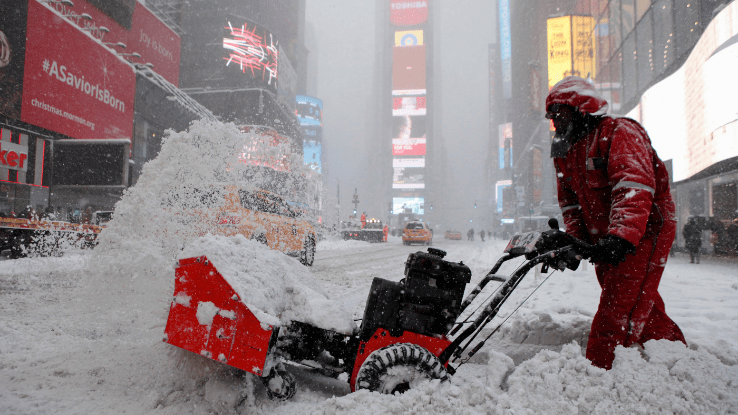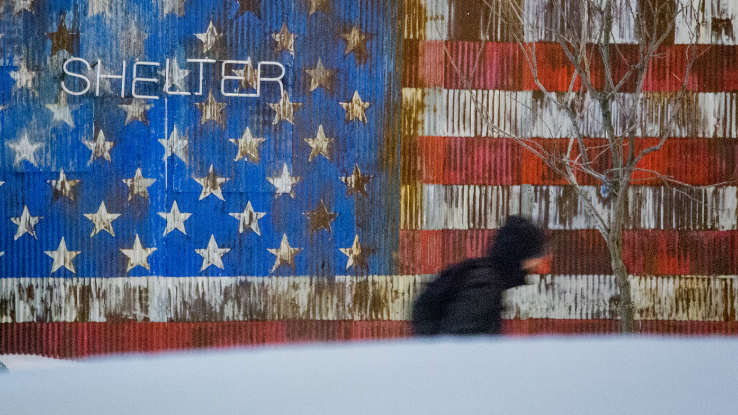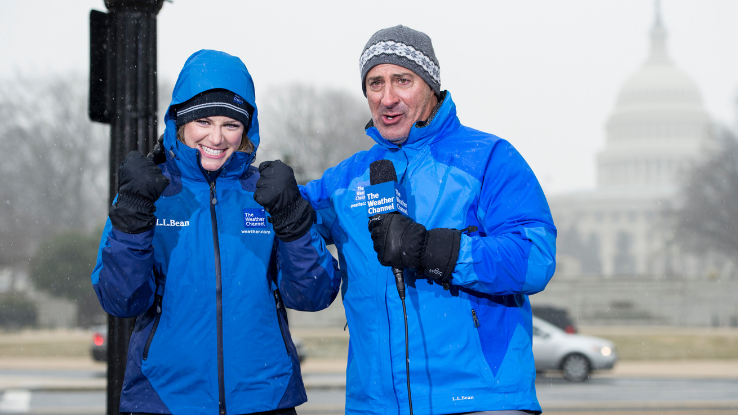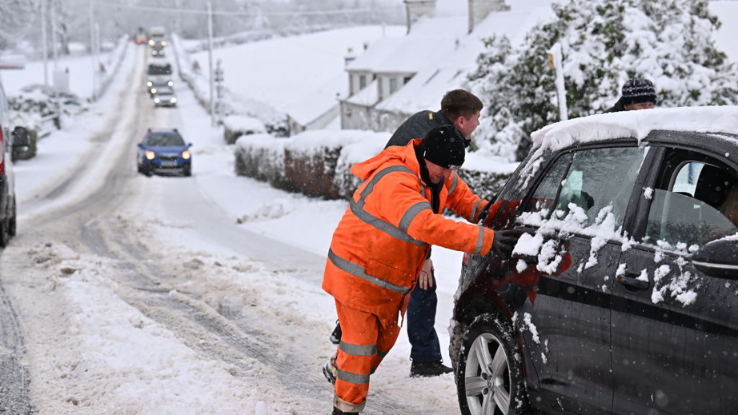Wild, Wild Weather: Why Do We Name Winter Storms?

Recent winter storms like Eunice and Uri have made a considerable impact across the world. These increasingly destructive and frequent pressure systems are also increasingly being referred to by name. This has not always been the case.
It’s also not uncommon to hear a winter storm referred to by multiple names; Eunice was also called Zeynep and Nora in different countries. To make matters more complicated, the process of naming winter storms isn’t as clear-cut as it is for tropical storms. The World Meteorological Organization (not the National Weather Service) sets six lists of names that rotate every year. A Category 5 hurricane’s name will be “retired,” but all in all the process for naming tropical storms is relatively seamless and streamlined.
Naming winter storms is a different story. There’s a lot of debate among meteorologists and weather watchers as to whether or not winter storms should receive names. The specific names of winter storms aren’t the problem — the issue is that naming them at all isn’t a practice people can agree on. To find out how this has become such a pressing weather issue, let’s take a look at why certain entities name winter storms and how this custom has sparked controversy.
Why Give Names to Winter Storms?

To name something is to make it noteworthy and recognizable. In many climates, storms and winter storms can be nearly everyday occurrences. Storms warrant planning in general, but some require more planning than others due to their severity. People often take extra preparations for winter storms, like buying extra food and dry firewood or putting chains on their tires. Winter weather can even affect entire power grids, as exemplified by Texas’ major power loss in the 2021 winter storm Uri.
Over-preparing for a winter storm can be counterproductive and costly, and meteorologists take a lot of flak when they don’t provide the accurate forecasting people depend on to make decisions. It might seem sensational to name winter storms, but a name can draw attention to a winter storm that might require more planning than other storms. Disaster preparedness is important, and winter storm names can help highlight that.
This is why names like “The Great Snow of 1717” and “Knickerbocker Storm” have been applied to various winter weather events. There’s still no surefire way to predict the weather, but news and weather outlets name storms to help keep people better informed. It’s better to be over-prepared for a storm than it is to get caught by an unexpected disaster.
States Took Naming Into Their Own Hands — and So Did the Weather Channel

In 1971, Connecticut news station WFSB started naming winter storms that affected Hartford and the areas around it. WLUK-TV in Wisconsin started doing the same thing in the 1980s. WLUK often picks a theme for its winter storm names, which in the past have spanned everything from local journalists to the Green Bay Packers. Connecticut’s WFSB names storms after famous people and has invited viewers to nominate and vote on future winter storm names.
In 2012, the Weather Channel also started naming winter storms due to a strong Nor’easter at the time that the network decided to call Athena. The channel developed naming criteria that go beyond a particular area and only require one of the following factors to be present in order for a storm to be named:
National Weather Service warnings for a winter storm, blizzard or ice storm covering at least a population of 2 million, and/or
- National Weather Service warning for a winter storm, blizzard or ice storm whose reach extends past 400,000 square kilometers (about the size of Montana)
- National Weather Service warning for a winter storm, blizzard or ice storm in areas with a population that exceeds 2 million people
Since the Weather Channel began implementing this system, there have been as many as 26 storms in one season (2013–2014) and as few as 19 named storms in a season (2019–2020). This national naming system can help scientists learn more about weather patterns and climate change, as the names make the events easier to track. It’ll take a few years to gather long-term data, but that’s why it’s important to record the weather at all. Data helps people learn, even though sometimes it’s people in the future who reap the benefits.
This process may not feel as smooth as the tropical storm-to-hurricane pipeline, but keep in mind that tropical storms typically have ample time to gain strength before they make landfall. That can give more people time to prepare for a hurricane or wait out a lighter storm. Winter storms can gain strength quickly in other ways and travel on different paths.
Almost every storm-naming system is alphabetical. People who live in an area with regionally named winter storms may think that their storms are different from those the Weather Channel is discussing, even when they turn out to be the same. This happens when different systems vary in their geographic coverage. And this phenomenon is a primary reason why people aren’t sure if we should be naming winter storms at all.
Why It’s Controversial and Confusing to Name Winter Storms

While the Weather Channel and local news channels name noteworthy winter storms, the National Weather Service — the U.S. federal government’s weather-forecasting agency — does not. So, places like Connecticut and Wisconsin have kept their naming systems in place. A result of this is that people in places like Connecticut and Wisconsin sometimes hear multiple names for winter storms, which creates confusion when they’re trying to plan.
Another wrinkle in this issue is that the UK and Ireland have their own methods of naming winter storms, which makes things confusing on a global scale. Winter storm Eunice affected both North America and Europe and was referred to as Zeynep in Germany and Nora in Denmark. Should there be a global naming system like there is for tropical storms in hurricanes? . A global naming system would be helpful for clarity’s sake, but it could also take a lot of resources to accomplish.
The current system for naming winter storms may be a bit flawed and confusing, but at least it draws attention to safety in times of potential crisis. Because much is still unknown about the weather and how to manage it, it’s best to proceed with caution. If you see a named storm, local or national, view it as a sign to check in with loved ones and community members and update your disaster-preparedness plan.





